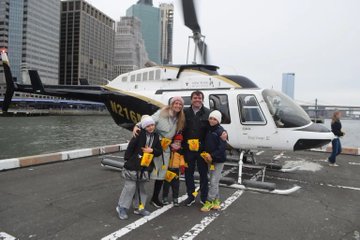Siemens CEO Agustín Escobar Tragic Helicopter Crash Exposes Cracks in Aviation Safety—And Shakes a Global Tech Giant
The sudden death of Agustín Escobar, President and CEO of Siemens Spain, along with his wife and three children, in a helicopter crash over the Hudson River this week, is more than a tragic family loss, it’s a seismic moment for the global tech and engineering community. As head of Siemens in Spain, Escobar wasn’t just a businessman; he was the regional steward of one of the world’s most influential industrial technology firms. His demise in a commercial tour helicopter, the Bell 206L-4 LongRanger IV, raises urgent questions about aviation oversight, mechanical modernization, and the paradox of analog risk in a digital era.
Escobar was not a passive executive. In Spain, he had actively promoted digital twin technologies, IoT-based industrial safety systems, and renewable energy grids, pushing Siemens as a key player in Europe’s green and digital transitions. For a man so deeply connected to engineering innovation to die in a mechanical failure involving an aging aircraft is an irony as brutal as it is symbolic.
The Crash and the Gaps in Oversight
According to The New York Post, the Escobar family had just arrived in Manhattan from Barcelona and boarded the helicopter as part of a sightseeing tour. Photos show the family smiling in front of the aircraft before takeoff, moments before it plunged into the Hudson.


The Bell 206L-4 is a legacy model, widely used but decades old in design. While generally reliable, it’s emblematic of an industry where safety advancements lag far behind what’s possible. Unlike commercial jetliners equipped with digital telemetry and layered redundancies, many urban-use helicopters operate with limited real-time diagnostics, minimal black box accountability, and uneven regulatory scrutiny, especially when flying over densely populated areas.
The Broader Problem for Urban Air Mobility
This tragedy underscores the fragility of public confidence in aerial transport, especially as companies like Joby Aviation, Lilium, and Archer push forward with electric vertical takeoff and landing (eVTOL) air taxis. The death of a global tech executive, who built his career on advocating for automation, safety, and intelligent infrastructure, highlights just how wide the gap remains between innovation in theory and implementation in practice.
If Siemens can design AI systems that monitor entire power grids in real time, why aren’t those same levels of safety and data insight standard in every aircraft carrying civilians over major cities?
What Comes Next
Escobar’s death should be a catalyst, not just for mourning, but for action. Lawmakers must close regulatory gaps. Aviation authorities need to reassess tour helicopter safety requirements. And most critically, the UAM industry must understand that public trust won’t come from flashy renderings or startup hype, it’ll come from proving, through data and transparency, that safety is non-negotiable.
Siemens built its legacy by ensuring that the systems we rely on, power, transit, healthcare, run safely and efficiently. Escobar’s passing is a devastating reminder that the same standards haven’t been applied to the skies above our cities.
In his honor, and for the future of safe air mobility, that must change, immediately.